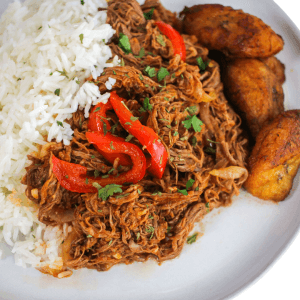Achieving the perfect internal temperature for burgers is not that hard but it is crucial for, texture, taste, and food safety. In this guide, we will walk you through the recommended internal temperature for burgers and the various degrees of doneness to ensure a delicious and safe meal every time.
Burger Temperature Chart
Cooking burgers to the perfect temperature ensures juicy, safe results every time. Our burger temp chart guides you through ideal internal temperatures for rare (120-125°F), medium-rare (130-135°F), medium (140-145°F), medium-well (150-155°F), and well-done (160°F and above) burgers. Whether grilling or pan-searing, use this chart to achieve your preferred doneness while keeping fine food safety in check. Check out our detailed chart below for tips and tools to nail the perfect burger every time!
| Doneness | Temperature | Burger Patty Appearance |
|---|---|---|
| Rare Burgers | 120 F to 125 F | Bright Red Center |
| Medium-Rare Burger | 130 F to 135 F | Pink Center |
| Medium Burger | 140 F to 145 F | Light pink center |
| Medium-Well Burger | 150 F to 155 F | Mostly brown, very little pink |
| Well-Done Burger | 160 F and above | Brown center |

Remember, these temperatures are just guidelines and personal preferences may vary. It’s important to use a reliable meat thermometer to accurately measure the internal temperature of your burgers.

Why Internal Burger Temperature Matters
Cooking burgers to the correct internal temperature is important because it helps kill harmful bacteria like salmonella and E. coli that may be present in raw meat. Additionally, it ensures that your burger is cooked to the desired level of doneness, resulting in a juicy and flavorful burger patty.
A bit of food safety and explaining the food danger zone
The danger zone refers to the temperature range between 40°F (4°C) and 140°F (60°C) at which bacteria can rapidly multiply in perishable food. This temperature range provides the ideal conditions for harmful bacteria, such as Salmonella and E. coli, to grow and thrive.
It is important to minimize the time food spends in the danger zone to avoid the risk of foodborne illnesses. Keeping food either below 40°F (4°C) or above 140°F (60°C), such as through proper refrigeration or cooking, helps to ensure food safety and prevent the growth of bacteria that can cause illness.
When it comes to food safety, time and temperature controls are effective ways of handling food safety. Moning is not only important to cook temperature to the right temperature but it is also as important to control the time food spends at certain temperatures such as in the danger zone temperature range.
USDA Temperature Guidelines
The United States Department of Agriculture (USDA) provides guidelines for safe cooking temperatures for different types of meat, including burgers ( beef ). The USDA recommends cooking ground meat to 160 degrees F or well done. As a food safety manager, I always cook food to a safe minimum especially when cooking for children, the elderly, or those with weak immune systems.
Keep in mind that these temperatures are just guidelines and personal preferences may vary. It’s important to use a reliable meat thermometer to accurately measure the internal temperature of your burgers.
Season those burgers well
Part of a delicious burger is not just time and temperature, but also proper seasoning. If you are cooking the burgers over high heat or searing them on a griddle or hot flat surface, you will lose some of the seasonings during the initial meat-to-hot surface contact. For a flavorful burger seasoning liberally with our beef seasoning, Gypsy, and simply cook the burger to your preferred doneness level.
By the way, we published a delicious Grilled burger with a smokey aioli recipe you might enjoy.
Tips for Checking Internal Temperature of Burger Patties
Here are some tips to help you check the internal temperature of your burgers:
- Use a thermometer – Invest in a digital meat thermometer that provides accurate readings. Insert the thermometer into the thickest part of the patty without touching the cooking surface. The thermometer should remain in the meat for at least 15 seconds to ensure an accurate reading.
- Avoid overcooking – To prevent overcooking, remove the burgers from the heat source when they are a few degrees below the desired internal temperature. They will continue to cook slightly while resting.
- Resting period – Allow your burgers to rest for a few minutes after cooking. This helps the juices redistribute, resulting in a more flavorful and tender burger.
Final Thoughts
By following these guidelines and tips, you can ensure that your burgers are not only delicious but also safe to eat and the right temperature. Experiment with different levels of doneness to find your perfect burger temperature. Happy grilling!






